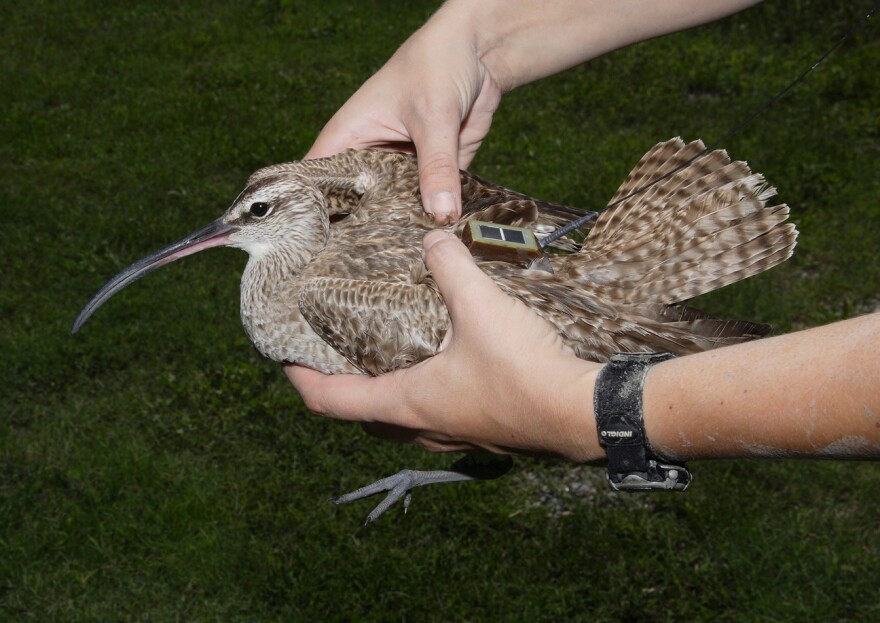Scientists on the Eastern Shore are watching the skies for shore birds now winging their way to South America. Thanks to satellites and transmitters, it’s possible to track their travels, and as experts learn more about the birds’ migration, they hope to better protect species in decline.
On a windy night last spring, a group of scientists sat on a dock in Machipongo on Virginia’s Eastern Shore –peering through binoculars, sipping wine and watching for whimbrels.
“215 have gone passed the dead tree. There’s a big block on the horizon down there, just to the left of the tree line.”
They’re brown shore birds, about 14-inches in length, with long curved beaks that can burrow into the mud in search of fiddler crabs. This year, spotters counted 2,492 whimbrels at their peak, with an average of 850 leaving the shore each hour.
Bryan Watts is with the Center for Conservation Biology at William and Mary. He says these birds can travel from Toronto to Virginia in a single night – and some will go 2,500 miles without touching down.
“They’re tremendous flyers – just a tremendous feat to fly these distances non-stop, and that’s why they’re here to build up fat to fuel those long flights, and so they’ll stage here for three weeks, and they may increase their weight by 50% or so.”
And like terrestrial travelers, they like coming back to the same little diner. Barry Truitt is with the Nature Conservancy.
“The amazing thing with a lot of these long distance birds – they depend on small sites that are separated by huge distances. The whimbrels that are here go to the same exact spot in the eastern arctic to nest. They come back to the same mud flat here, and they go back to the same little patch of mangroves in the Caribbean or Brazil where they winter. I mean you have to protect these birds at every one of their stops and wintering and nesting areas, or you’re going to lose them.”
So scientists caught 30 whimbrels and attached super light solar powered transmitters to their backs, making it possible for satellites to track them.
“There are a lot of people who follow our birds on the Internet. We had a bird that was coming back north from the Caribbean that ran into a tropical storm and landed in Florida , just north of the Everglades. We actually had a fellow see where the bird landed on the Internet, went to the spot and called Bryan Watts on his cell phone, described what the bird was doing and all that as he was looking at it.”
That was a happy moment – but at other times, this technology has told a tragic tale.
“We lost two birds in the Caribbean that were shot by sport hunters. They land in these Caribbean islands like Guadeloupe, which is where this happened, and they have these small manmade wetlands just to attract the shorebirds. There are 3,000 licensed hunters on the island with no limits, no season, no management at all.”
The news spread rapidly through communities of bird lovers. Blogs and websites were buzzing, and the Society for the Conservation and Study of Caribbean Birds organized a letter writing campaign to 35 officials and agencies in France, Canada and the United States. This year, Martinique and Guadeloupe announced a three-year moratorium on shooting of whimbrels and three other species.
http://www.wildlifetracking.org/index.shtml?project_id=369&dyn=1376606127


